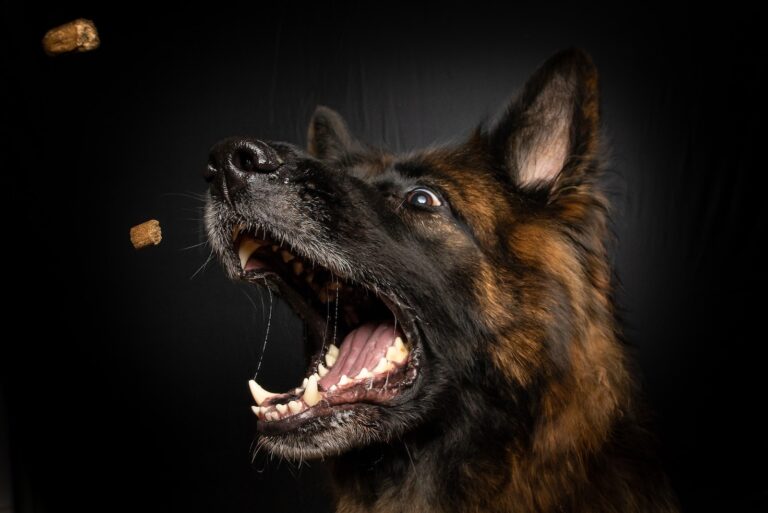The Ethics and Dangers of Painting Dogs: A Call for Compassion
In recent times, a concerning trend has emerged on various social media platforms and video-sharing websites: the painting of dogs. While it may appear innocuous at first glance, this practice raises important questions about the ethical treatment of animals and the potential dangers associated with such activities. In this article, we will delve into the reasons why painting dogs, even with vegan paints, is both ethically questionable and potentially harmful to these beloved companions.
The Ethics of Painting Dogs
Dogs, as sentient beings, possess the capacity to experience a wide range of emotions, including fear, discomfort, and distress. When subjected to the process of painting, they are often placed under undue stress, forced into a situation they neither understand nor consent to. This raises significant ethical concerns about the rights and well-being of these animals.

First and foremost, painting dogs treats them as objects rather than living creatures with their own autonomy. It reduces them to a mere canvas for human creativity, disregarding their innate needs and desires. Dogs deserve to be treated with respect, kindness, and consideration for their natural instincts and preferences.
Furthermore, painting dogs can be a deeply unsettling experience for them. The unfamiliar sensation of brushes and paints on their fur, along with the presence of strangers, can lead to heightened stress levels. This not only compromises their mental well-being but can also have physical repercussions, as stress has been linked to a range of health issues in dogs.
The Dangers of Painting Dogs
Beyond the ethical concerns surrounding the practice of painting dogs, there exist substantial practical dangers that cannot be overlooked. Even when opting for seemingly harmless options like vegan or non-toxic paints, the risks remain prevalent.
One of the most immediate concerns is allergies and skin irritation. Dogs, by nature, possess sensitive skin, making them susceptible to adverse reactions from the chemicals present in paints. These reactions may not be readily apparent and can lead to a prolonged period of discomfort for the animal, undermining their overall well-being.
Furthermore, there is a significant risk associated with ingestion and potential toxicity. Dogs are habitual groomers, and in the process, they may inadvertently consume traces of the paint. This seemingly innocuous act can result in severe health complications. It’s worth noting that even vegan paints, often considered safer, may contain substances that, if ingested, could lead to gastrointestinal distress and other related issues.
In addition to these physical concerns, there are also potential respiratory hazards to consider. The fumes emitted from paints, particularly in enclosed spaces, pose a threat to both the dog and the humans involved in the painting process. Prolonged exposure to these fumes can lead to respiratory problems, further exacerbating the risks associated with this practice.
The impact of paint on a dog’s sense of smell. Dogs rely heavily on their olfactory senses to navigate and interpret the world around them. Introducing foreign scents, such as those from paints, can indeed disrupt and potentially harm their ability to process their environment.
Paints emit strong odors that, while tolerable to humans, can be overwhelming for dogs. This interference with their natural scent perception can cause confusion and distress. Moreover, certain chemicals in paints may have lingering effects on the air quality in their immediate surroundings, further compromising their olfactory experience.
Long-term exposure to such altered olfactory environments could potentially lead to a diminished sense of smell, impacting the dog’s ability to communicate, hunt, and even bond with humans and other animals. This is yet another reason why painting dogs, even with ostensibly safe paints, poses an ethical concern.
In considering the well-being of our canine companions, it is crucial that we prioritize their sensory experiences and avoid subjecting them to environments that could potentially harm or disrupt their natural abilities. This further reinforces the argument against painting dogs, underscoring the need for more compassionate and respectful practices when it comes to our beloved four-legged friends. This form of grooming strays far from the principles of compassionate care and respect for an animal’s autonomy, crossing into the realm of unnecessary and potentially harmful manipulation. It is crucial that we advocate for grooming practices that prioritize the physical and emotional well-being of our canine companions, rather than indulging in frivolous and potentially detrimental activities like painting.
Equally important is the often overlooked aspect of emotional trauma inflicted upon dogs. The act of painting, which involves unfamiliar sensations and environments, can be profoundly distressing for these sensitive creatures. This distress has the potential to leave a lasting impact, potentially resulting in altered behavior, heightened anxiety, or even episodes of aggression. It is crucial to acknowledge that dogs, like humans, are susceptible to emotional trauma, and subjecting them to such experiences is both ethically questionable and morally wrong.
In light of these inherent dangers, it is imperative that we reconsider the practice of painting dogs altogether. Our responsibility as custodians of these beloved companions is to ensure their safety, well-being, and emotional comfort. There are countless alternative forms of artistic expression that do not jeopardize the health and happiness of our canine friends, allowing us to celebrate their unique presence in our lives without compromising their welfare.
Conclusion: A Call for Compassion
In our pursuit of artistry and creativity, we must not forget our responsibility to the animals that share our lives. Painting dogs, regardless of the type of paint used, is a practice that should be reconsidered. It is our duty to advocate for their well-being and to treat them with the kindness and respect they deserve.
Instead of using dogs as canvases, let us explore alternative ways to express our creativity that do not compromise the physical and emotional well-being of our beloved companions. Through compassion and understanding, we can forge a deeper, more meaningful connection with these remarkable creatures that enrich our lives in countless ways.






